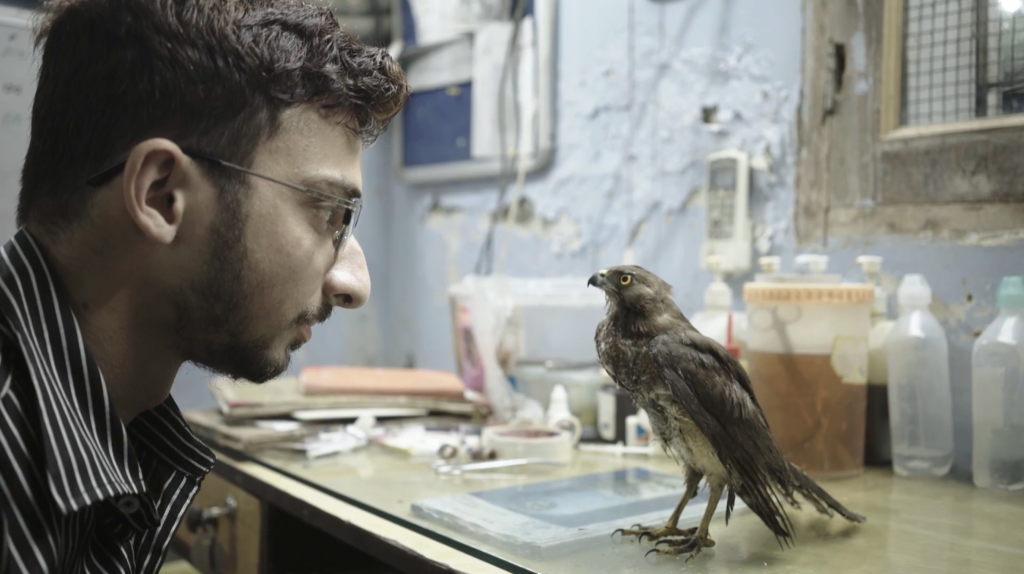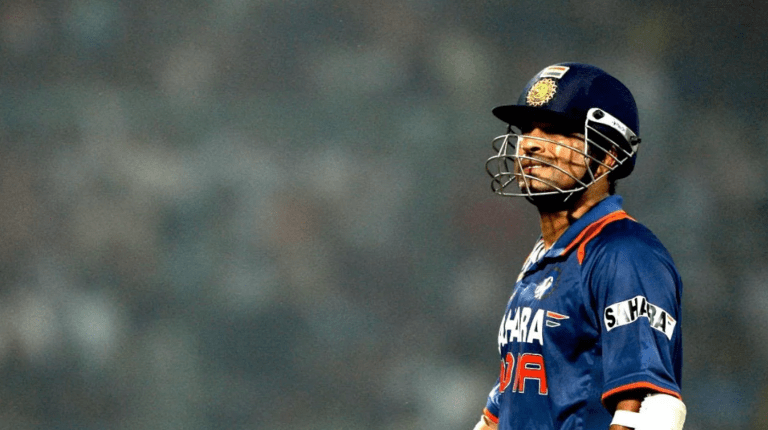“As Delhi’s air changed, so did its metabolism”, one of the brother’s remarks in voiceover early on in Shaunak Sen’s All That Breathes, the sole Indian film at Sundance premiering in the World Documentary Competition section this year. This one line is key to unravelling the twin thematic enquiries into the ecological and political disrepair that Sen mounts audaciously in his film. Kites plummeting scathed from an inhospitable sky and Shaheen Bagh are both enfolded into the heart of All that Breathes. Even if the press notes did not spell it out, the film’s purposes are clear and focused. It claims no expertise to be regarded as a nature-based production or be circumscribed by the apparent limitations of being a wildlife documentary.
Sen aspires, as he did in his previous film Cities of Sleep, to open up a conversation about the cityscapes, the tense, constantly evolving relationship between the human and the so-called non-human, the negotiation to secure a healthy cohabitation therein. The political dimension interrelating to the everyday tentative, uneasy state of being the targeted Other in a nation with escalating militant fascist tendencies also thrums through the portrait of the family that the film renders. Nadeem and Saud are the ‘kite brothers’ who have been nursing injured birds that have been plummeting for nearly twenty years, on their own, besides running a soap dispensary.
“Unlike other birds whose flight is more laboured, kites swim, “one of the brother’s remarks in voiceover early. However, the film presents only sparing but utterly magisterial shots registering this. This nature of swimming freely is undermined by a devastating ecology. As we proceed through the film, the vision of the magnificent raptors swooshing and sailing in a perfect, uninterrupted trajectory across a clear expanse of sky or making dazzling configurations is revealed as a case of fortunate exceptionalism.
Birds vanish uncomfortably into the thick noxious fumes that clog the skies. The proliferation of buildings with the tangle of wires cut lethally into the safe possibility for a skyful of unfettered wandering and inhabiting. They are pushed to adapt and improvise to an ecology profoundly disrupted by human and mechanical encroachments and advances. Shrinking space is posited as an undercurrent that runs inextricably through the narrative, drawn out by not just the black kites that form the major constituent to the story fabric, but, as a narrator insists, all elements that make up the “community of air” which bind us all together into an increasingly loosening embrace.

In ways, more than once, ‘All That Breathes’ suggests the obvious deep connection the brothers share with the black kites, or any creature, in fact, is perhaps based on keeping the ties to their mother’s memories alive and strong. A past where ancestors could mingle with their non-human counterparts is being firmly held onto and somehow sheltered from the denial of a generous state of living. A breathtakingly shot and lushly scored sequence demonstrating the meat tossing occasion the brothers talk of, where their elders took them to when they were young, suddenly bursts through the decidedly intimate textures developed so far and instantly elevates it to staggeringly epic status.
The film’s DoP is Ben Bernhard and divides its cinematography credits among Riju Das and Saumayanda Sahi, which make me unsure how the singular visual grammar was arrived at and realized. However, the results are astonishing both in the bigger set pieces, consciously imbued with a poetic style and tenor, where the wheeling birds evoke as a narrator says, a dizzying feeling, and the more minute bits where the camera often pulls back from the initial more easily noticeable to the human eye settings, to a baby turtle watching traffic jostle past, insects crawling discreetly at a remove from a fire. There is a striking shot of a beetle sliding through a puddle which reflects the outline of an aeroplane above, thereby visually establishing one of the central thematic preoccupations. In many places, the camera is positioned at the distance characterizing human subjectivity and gradually realigns and shifts itself to assume a level of considerable proximity to the animals, such as in the opening shot which ultimately progresses to push us uptight close against a flurry of rats scurrying across a dump yard, their squeaking amplifying with severity.
Related to ‘All That Breathes’: 10 Delightful Indian Documentaries Of The Decade (2010s)
Sen punctuates the narrative with ample use of voiceover, by the three chief subjects, mainly the brothers and a volunteer Salik, which are dutifully relayed over lyrical passages, that visually enable him to capture, scan and comment on the city’s changing skyline, set to Roger Goula’s swelling music significantly contributing to a sneakily winning edge in the film. The voiceover duties are evenly distributed between Nadeem and Saud, both bringing individually discrete but wondrously convergent perspectives, their respective outlook to their love and passion for healing the birds, along with brief accounts of how, among an array of things, today’s urban birds are more innovative than rural counterparts or those of the earlier generations, compelled to improvise to survive amidst the humanity that has turned into their natural environment.
The brothers believe that while feeding the birds meat, they eat away all our filth and, on a more spiritual and metaphorical level, the cumulative difficulties and onerous tasks that encumber our lives. The emphasis is on the birds occupying a co-dependent relationship with humans; they also aid in controlling the heaps of garbage in the landfills as they feed on tones and tones of it.
Sen focalizes intermittently on the conflicts and tussles between the brothers, by contrasting how they perceive their life and what they seek from it. Saud is at his most content when he can duly nourish the injured birds and restore them to good health; the bliss he feels when he achieves that is equated to a classical musician’s mental and emotional stage while being at the height of a raga. Nadeem is driven to do more, train abroad and ameliorate the reputation and facilities of the makeshift hospital housed in the tiny basement of their modest home in New Delhi.
With the strength of his persistent proposals for foreign funding, they build a proper wildlife hospital. Saud stresses that the real reason behind their arguments is never over financial reasons or ego issues, but grounded solely and wholly on a concern for what is happening with the sky, birds and air. Their fights, he says, are smaller symptoms of a deeper malaise in the despoiled ecosystem they are surrounded by. The three bird healers’ gentle courage shines through, so does the understated but remarkably strong spirit of the wife who also resists the norm in her way. Sen evokes linkages between the violence in the skies and that spilling through Delhi’s streets, but the hate-spewing Islamophobic rhetoric of the Citizenship Amendment Act 2019 during which the film unspools never stunts or dilutes the private virtue and moving perseverance of the three who soldier on.
The physical and psychological repercussions are delineated as the family and any Muslim kinsfolk who live in the shadow of continual fear, steadfast vigilance and alertness to the breakdown of civic order, State-sanctioned paradigms of changing power equations and sheer mayhem intently calibrated to invisibilize and strip them of functional rights and dignity. There are haunting, sobering realizations signalling that this family, which gives refuge to the fallen creatures, with impaired tendons and muscles, are perched precariously themselves in a circumstance of being hurled onto refugeedom themselves. The peril of being ousted from their land looms like a nagging afterthought behind the family’s everyday existence, while loudspeakers blare appealingly for appeal and empathy in these fractured times.
Amidst what seems to be a thoroughly bleak situation, full of rejected funding applications and hard-pressed economics of sustaining their bird rehabilitations ( steep meat prices, malfunctioning mincing machine), Sen peppers in some delightful moments as when a bird swoops and steals off Salik’s glasses, on its beak. Accompanied with these are also patches of zany humour; when Salik asks nervously if birds will also feed on a caregiver like him, to which he gets a pat riposte stating cruelty is natural, his ensuing expression faintly amusing in its perturbed contours.
Also, Read: Ram Ke Naam [1992] Documentary Review – A Cop-out Take On 1992 Riot
The camera snakes through gullies, above rooftops, across riverbanks and frequently resorts to slow pans across the breadth of their home’s cramped interiors. There are times when the film lapses into straightforward stretches treatment wise, and ineffectively over frequent close-ups of them cooped up birds themselves. Sen locates the emotional immediacy spot on the restlessness of being trapped at a point of life where progress and hope seem determinedly unavailable, the muted sadness that perceptibly envelops as one leaves a close one. Sen bungs in the very fears and anxieties that cripple the brothers.
One of them wonders is that perhaps he will die of a heart attack in the basement where the birds are treated; he says, kites will fly out when his chest bursts open. When the brothers achieve a monumental milestone in their twenty-year-old journey, I admit I got teary just watching them as they look on proudly at what they managed to build, scaling all odds. In the director’s statements, Sen writes how he wished to harness the enchantment of the sky through this film. I think this film succeeds many steps more; these brothers, “unique philosophers of the urban” are boldly, quietly guiding all of us with immeasurable grace and fortitude, showing a way out of the morass of our times.




![Ruby Sparks [2012]: The Deconstruction of the Manic Pixie Dream Girl Persona](https://79468c92.delivery.rocketcdn.me/wp-content/uploads/2017/07/ruby-sparks-51f7ee4c05fa4-768x432.jpg)

![Karnan [2021]: Prime Video Review – A Brilliant Subversion on the Community Saviour Template](https://79468c92.delivery.rocketcdn.me/wp-content/uploads/2021/05/Karnan-1-768x384.jpg)


![4L (4 Latas) Netflix Review [2019] – A derivative Road Trip](https://79468c92.delivery.rocketcdn.me/wp-content/uploads/2019/07/4-latas-movie-768x317.jpg)